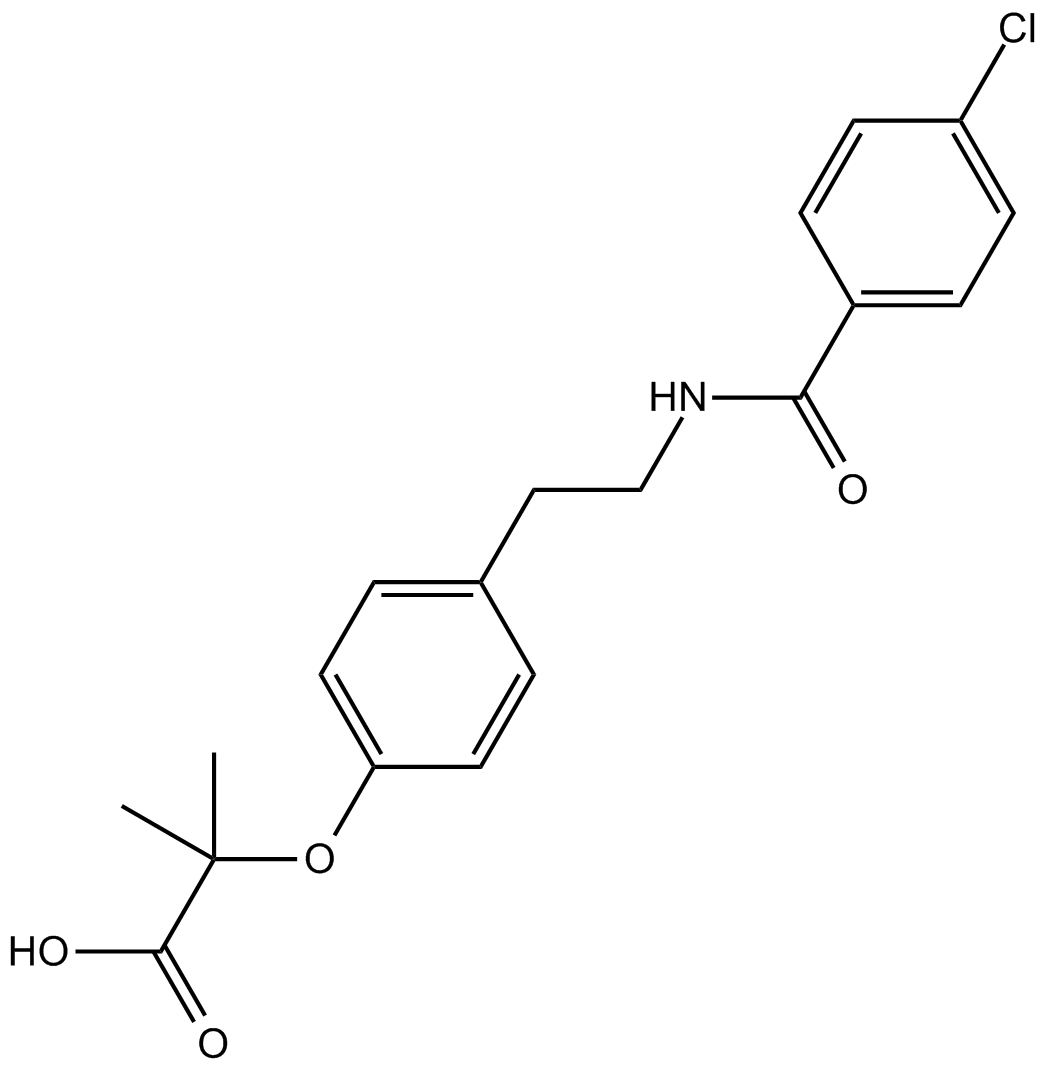Bezafibrate (Synonyms: Benzofibrate, BM 15075) |
| Katalog-Nr.GC14543 |
Bezafibrat ist ein PPAR-Agonist mit EC50-Werten von 50 μM, 60 μM, 20 μM fÜr menschliches PPARα, PPARγ und PPARδ bzw. 90 μM, 55 μM, 110 μM fÜr murines PPARα, PPARγ und PPARδ; Bezafibrat wird als hypolipidÄmisches Mittel verwendet.
Products are for research use only. Not for human use. We do not sell to patients.

Cas No.: 41859-67-0
Sample solution is provided at 25 µL, 10mM.
Bezafibrate is an agonist of PPAR, with EC50s of 50 μM, 60 μM, 20 μM for human PPARα, PPARγ and PPARδ, and 90 μM, 55 μM, 110 μM for murine PPARα, PPARγ and PPARδ, respectively; Bezafibrate is used as an hypolipidemic agent.
Bezafibrate is an agonist of PPAR, with EC50s of 90 μM, 55 μM, 110 μM for murine PPARα, PPARγ and PPARδ, and 50 μM, 60 μM, 20 μM for human PPARα, PPARγ and PPARδ, respectively[1]. Bezafibrate (> 200 μM) shows significant cytotoxicity against human retinal microvascular endothelial cells (HRMECs) and human retinal pigment epithelial ARPE-19 cells. Bezafibrate (30-100 μM) suppresses tumor necrosis factor (TNF)α induced inflammatory factors and regulates TNFα induced nuclear factor (NF)-κB transactivation in HRMEC. Bezafibrate inhibits VEGF-induced HRMECs migration, and inhibits interleukin (IL)-1β-induced VEGF secretion of ARPE-19 cells[2].
Bezafibrate (0.5%) markedly reduces plasma lipid and glucose levels, and increases islet area in the pancreas in TallyHo mice. Bezafibrate also improves energy expenditure and metabolic flexibility. Moreover, Bezafibrate ameliorates steatosis, modifies lipid composition and increases mitochondrial mass in the liver[3].
References:
[1]. Willson TM, et al. The PPARs: from orphan receptors to drug discovery. J Med Chem. 2000 Feb 24;43(4):527-50.
[2]. Usui-Ouchi A, et al. The peroxisome proliferator-activated receptor pan-agonist bezafibrate suppresses microvascular inflammatory responses of retinal endothelial cells and vascular endothelial growth factor production in retinal pigmented epithelial cells. Int Immunopharmacol. 2017 Nov;52:70-76.
[3]. Franko A, et al. Bezafibrate ameliorates diabetes via reduced steatosis and improved hepatic insulin sensitivity in diabetic TallyHo mice. Mol Metab. 2017 Jan 6;6(3):256-266.
Average Rating: 5 (Based on Reviews and 30 reference(s) in Google Scholar.)
GLPBIO products are for RESEARCH USE ONLY. Please make sure your review or question is research based.
Required fields are marked with *




















